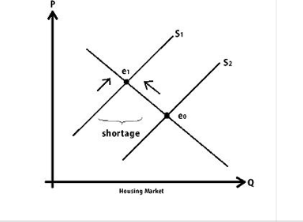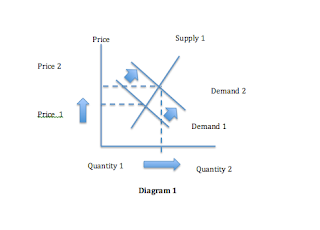The Impact of Rising Petrol Prices
Based
on the news article I have chosen from NBCnews.com Saturday 6 October 2012
‘Insane jump in California Gas prices starts to ease’, it discusses about the unprecedented
spike in California gasoline prices which slowly showed signs of easing on
Friday,. Braden Reddall reports that, “abrupt price spike blindsided the
state's car-loving consumers and left some retailers in Los Angeles scrambling
for supply, causing wholesale prices to surge and driving up pump prices by an
average of 36 cents a gallon.”. Therefore in my opinion I am quite ‘balanced’
about the surprising price increase in gasoline.
As
many years have passed, it has brought many physical changes to the world oil
market. With that, making the demand increasingly playing a vital role in
sustaining the demand and supply balance. No doubt that our demand for oil is
inelastic and we should take some precautionary steps before it runs out.
The world we live in now, the supply of oil, slowly but surely, is
becoming more inelastic as fresh supply
of oil comes increasingly from unconventional oil.
In terms of the demand of oil, the elasticity of our demand for
oil reflects the options we have been using oil in our daily life. Mostly all
of us can quickly cut our consumption of oil in small measures such as by carpooling,
using public transportation, etc. In order to make that shift, people
find it hard and usually ended up going back their own ways. For example,
if a person lives in a suburban area, far away from sources of public
transportation, most probably he or she would opt to purchase a private
vehicle.
In the long run, our personal preference to reduce oil consumption
increase. The best alternative would be to switch to a more fuel
efficient vehicle
On the other hand, the elasticity of supply, In the meantime, the
options to reduce oil demand in response to the rising prices ranges from
inconveniences to expensive.
The
price of petrol is influenced by the supply and demand for crude oil. If the
supply of oil increases, its price will decrease and if the supply decreases,
then prices will increase. As oil is such a large component of petrol, any
changes in the price of oil will apply the same pressure to the price of
petrol.
We all should take precautionary measures to increase the
elasticity of oil demand, and reduce the pain of demand destruction by:-
i) Build and construct more alternative modes of transport, such
as MRT’s, bike lanes, and practice carpooling
ii) Increasing the taxes
on gas slowly and predictably over time to raise funds to fuel the above
improvements, and to indicate to the consumers that they need to prepare for higher
prices in the long run and suggest to the public by purchasing more fuel
efficient vehicles
If price increases are large and sudden, their impacts on short-term
growth may be much larger than if they are gradual, because sudden oil price
shocks scare households and firms and prevent them from making optimal
decisions in the short run.
Fears of oil scarcity does linger and worries
that the world will simply run out of oil—also loom large in the minds of many.
A recent IMF Working Paper suggested that some of the gyrations in oil prices
in recent years have come about because market participants appear to give some
credence to this geological view of binding constraints on oil supplies.
The
foremost thing which will happen due to petrol price hike is car sales will
take a plunge. Many car buyers will think of switching to diesel or natural gas
powered car, but as we all know, diesel commands higher price and natural gas
powered cars are limited and not so well accepted by the common buyer. As
the gap between petrol and diesel prices is becoming wider, it’s quite clear
that the demand for diesel fuel and natural gas will increase.
An
the new invention of Hybrid car producers such as Toyota, Honda, GM and Nissan
take advantage of greater oil prices because higher oil prices result in
greater gas prices, encouraging customers to find out ways to decrease the
amount of gasoline that they utilize. Auto manufacturers have decided to
manufacture electric cars and they might make more profits if oil prices will
rise in the future.
Future supply disruptions may turn out to be costly not just because
of the immediate loss of oil supplies, but because of the fears they trigger
about a more permanent loss.
Reference
Article : http://bottomline.nbcnews.com/_news/2012/10/05/14246283-insane-jump-in-california-gas-prices-starts-to-ease?lite
Reference
Article : http://bottomline.nbcnews.com/_news/2012/10/05/14246283-insane-jump-in-california-gas-prices-starts-to-ease?lite







